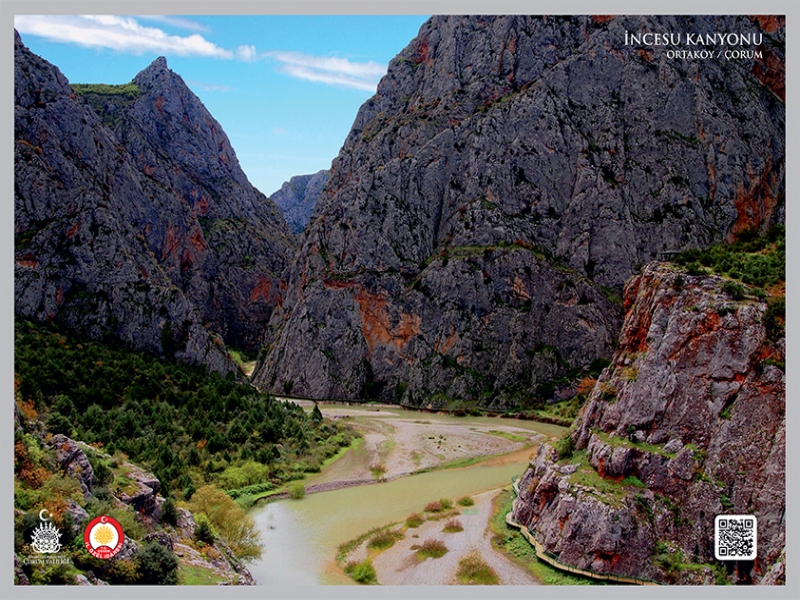
This canyon, located in the village of Incesu boundaries in the county of Ortakoy, called ‘Uzungecit(Long passage)’ by the vilagers and Kazankaya Canyon in Yozgat, is 12 km long.
In the east of this canyon, the 1363 m high Mount Alan, in the west Mount Malbelen are located. On the rocks on both sdes of the Cekerek river, whose ancient name was Scylax, there are ruins of the walls belonging to the Hellenistic Period(2 B.C.) and a water cistern which is called the stairs by the local people.
A-2-km long walking path was made by the Special Provincial Administration into the canyon.
The rock relief is a Goddess, first seen by Satılmıs UYSAL in 1985, is about 1 km away from Incesu village on the left side along with the direction of the running water, on the rocks and 1.5 m high from the river bed. Made in a recess, the Goddess overlooks to the Cekerek(Scylax) river and to the castle opposite which there are high rocks. The Goddess, which is though to be sitting on the throne, is holding a baby lion in her left hand. With all these characteristics, she is told to be Kybele.
The Kybele rock relief is the biggest among the ones belonging to the Hellenistic Period in Anatolia and another Kybele rock relief as big as this one has not been know yet.
There is a meaning of why it was made here. After the death of Alexander the Great, Britain, Pontus, Capadocia Principalities gained their freedom in Anatolia starting from 280 B.C. The local Princes adopting the Greek culture became kings of these states. The rock relief is within the boundaries of the Pontus Kingdom.
An acropolis(the field where the most important structures are located) has been found right opposite to the Goddess. Within this 1100-meter-high acropolis, there is a 300-meter-long structure to which you can reach through 468 steps of stairs.
The Mother Goddess tradition started to appear from the Neolithic Age on in Anatolia. From 9000 B.C. onwards, we come across the Mother Goddess cult with the meanings plentifulness, productivity and fertility. This cult continued in the Chalcolithic Period and ancient Bronze Age as well. The Mother Goddess cult, which was practiced in the Hittite period(2000 B.C.), receivedthe Kubaba in the late Hittite Period, Kybele during Phrygian Period, with the same name during the Hellenistic Period. This tradition moved to Rome in 204 B.C. and continued with the name Magna Mater.